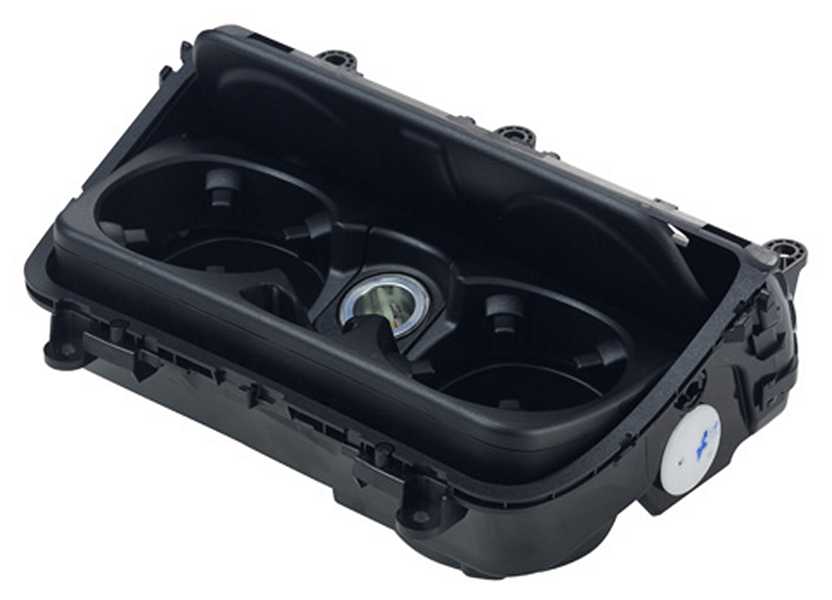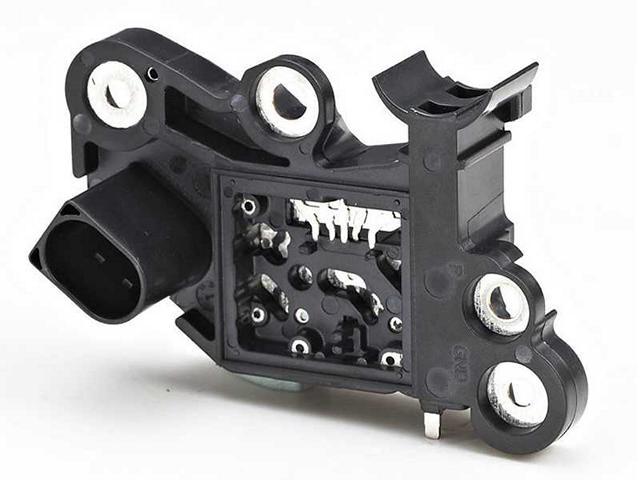Exploring the Benefits and Applications of Insert Molding
Insert molding is a highly versatile manufacturing process that has gained significant popularity in various industries. By combining different materials, insert molding allows for the creation of complex, functional, and durable products. In this article, we will delve into the details of insert molding, its basic principles, key considerations, advantages, and applications. Join us as we explore the world of insert molding and discover its immense potential.
Basics of Insert Molding
Insert molding involves the integration of pre-formed components or inserts into a molded part during the manufacturing process. The process begins with the preparation of a base material, which is typically a thermoplastic or thermosetting polymer. Inserts, made from materials such as metal, plastic, or even electronic components, are strategically placed within the mold. The injection molding process then takes place, allowing the molten base material to encapsulate and bond with the inserts. After cooling and solidification, the final product is ejected from the mold, resulting in a seamless integration of the inserts within the molded part.
Key Considerations in Insert Molding
To ensure successful insert molding, several factors must be carefully considered. First, the selection of appropriate materials is crucial. The base material should possess the desired mechanical, thermal, and chemical properties, while the inserts should be compatible with the base material and fulfill specific functional requirements.
Design considerations play a significant role in insert molding. The mold design should accommodate the inserts’ placement and fixation, allowing for optimal adhesion and bonding. Careful attention to detail is necessary to achieve precise dimensional control and minimize any defects that may arise during the molding process. Additionally, mold complexity and cost should be evaluated, as more intricate designs and multiple inserts can impact production efficiency.
Advantages and Applications of Insert Molding
The advantages of insert molding are numerous. Firstly, it enhances product functionality and performance by combining different materials with complementary properties. Inserts can provide strength, conductivity, insulation, or specialized features, resulting in superior product quality. Moreover, insert molding offers increased design flexibility, enabling the creation of complex shapes, intricate geometries, and integrated features that would be challenging or impossible to achieve through traditional manufacturing methods.
Insert molding improves production efficiency and cost-effectiveness by reducing the need for secondary operations or assembly processes. By incorporating multiple components into a single molded part, it eliminates the time-consuming and labor-intensive steps associated with traditional assembly. This streamlined approach not only saves time but also reduces material waste and lowers production costs.
Insert molding finds applications in various industries. In the automotive sector, it is utilized for manufacturing precision parts with embedded electronics, enhancing safety and functionality. The electronics industry benefits from insert molding by producing housings and connectors with improved structural integrity and EMI shielding. In the medical device field, insert molding enables the production of complex devices, such as catheters and implants, with precise dimensions and integrated components. Additionally, consumer goods such as appliances and tools can benefit from the enhanced durability and ergonomic design achieved through insert molding.
At Sincere Tech, we are dedicated to maintaining our position as a leading plastic mold company by embracing industry advancements and anticipating future trends. We actively explore innovative materials and composites that offer improved performance and sustainability. Through ongoing investments in research and development, we deliver cutting-edge solutions that address the evolving needs of our customers. As one of the best injection mold suppliers in China, we pride ourselves on our commitment to excellence.
In line with our commitment to sustainability, we prioritize environmentally friendly practices. We proactively seek sustainable alternatives, such as biodegradable polymers, and implement recycling initiatives to minimize the environmental impact of our manufacturing processes. By choosing our custom injection molding services, you can align your brand with sustainable manufacturing practices and contribute to a greener future.
Quality is of the utmost importance to us, and we maintain stringent quality control measures throughout the entire manufacturing process. Our state-of-the-art facilities and skilled technicians ensure that each product undergoes rigorous inspection and testing, guaranteeing exceptional performance, reliability, and customer satisfaction.
When you partner with Sincere Tech as your preferred China mold maker, you can expect the highest level of professionalism, expertise, and innovation. We are dedicated to helping you bring your ideas to life, delivering superior products that excel in performance, durability, and cost-effectiveness.
Our expanded capabilities include:
- Rapid Prototyping: We offer rapid prototyping services to quickly transform your concepts into tangible prototypes, allowing for iterative design improvements and accelerated product development.
- Precision Tooling: Our advanced tooling capabilities enable us to create high-quality molds with tight tolerances, ensuring consistency and precision in your injection-molded products.
- Overmolding: We specialize in overmolding, which allows for the combination of multiple materials or components, resulting in enhanced functionality, aesthetics, and durability.
- Insert Molding: Our expertise in insert molding enables us to securely encapsulate inserts within the molded parts, facilitating efficient assembly and enhancing product performance.
- Two-Shot Molding: With two-shot molding, we can produce complex, multi-material components in a single operation, reducing assembly requirements and enhancing design possibilities.
- Value-Added Services: In addition to injection molding, we offer a range of value-added services, including product assembly, packaging, and logistics support, streamlining your supply chain and reducing costs.
Partner with Sincere Tech Mould suppliers for your custom injection molding needs, and benefit from our comprehensive capabilities, unwavering commitment to quality and sustainability, and our drive to exceed your expectations at every step of the process. Together, let’s bring your innovative ideas to life.
Case Studies and Examples
Let’s take a closer look at some real-world examples of insert molding applications. In the automotive industry, insert molding is utilized to create components like sensors, connectors, and interior trims. By encapsulating sensitive electronics within the molded part, it ensures their protection against environmental factors and vibration.
In the electronics sector, insert molding is employed in the production of connectors, switches, and circuit board housings. The integration of metal inserts with plastic molds provides excellent conductivity and durability, meeting the rigorous demands of electronic applications.
In the medical device manufacturing field, insert molding enables the production of intricate devices such as drug delivery systems, surgical instruments, and prosthetic components. By combining different materials, it ensures the necessary functionality and biocompatibility required for medical applications.
Comparison with Other Molding Techniques
When comparing insert molding with other molding techniques, it’s important to highlight the distinctive features and advantages of each method.
Injection molding, which is closely related to insert molding, involves injecting molten material into a mold cavity to create a solid part. The key difference lies in the inclusion of inserts in insert molding. While injection molding focuses on creating standalone parts, insert molding allows for the integration of pre-formed components, enhancing the functionality and performance of the final product.
Overmolding is another technique that involves encapsulating a substrate or base part with a second material layer. Unlike insert molding, where inserts are placed before the injection molding process, overmolding typically involves molding a base part and then adding a second material layer. Overmolding offers similar benefits in terms of improved functionality and design flexibility, but it differs in terms of the order and process of material application.
Traditional assembly methods involve separate manufacturing and assembly steps, where individual components are manufactured independently and later assembled to form the final product. In contrast, insert molding streamlines the production process by combining the molding and assembly steps into a single operation. This eliminates the need for secondary assembly processes, reduces labor costs, and ensures better precision and reliability.
Future Trends and Innovations in Insert Molding
The field of insert molding continues to evolve with advancements in materials, automation, and smart technologies. Here are some emerging trends and innovations to watch for:
- Advanced Materials: The development of new materials with enhanced properties, such as biodegradable polymers, conductive plastics, and high-temperature resins, opens up exciting possibilities for insert molding applications. These materials offer improved performance, sustainability, and compatibility with a wide range of inserts.
- Automation and Robotics: Automation plays a vital role in improving efficiency, reducing costs, and ensuring consistent quality in insert molding. Robotics and automated systems are increasingly used for insert placement, injection molding, and post-molding processes. This trend leads to higher productivity, reduced cycle times, and improved overall manufacturing precision.
- Integration of Smart Technologies: The integration of sensors, IoT connectivity, and real-time monitoring systems in insert molding enables better process control, quality assurance, and predictive maintenance. Smart technologies offer the potential for real-time data analysis, optimization of production parameters, and proactive identification of issues, leading to improved production outcomes.
Conclusion
Insert molding is a powerful manufacturing technique that offers numerous benefits, including enhanced functionality, design flexibility, and cost-effectiveness. By integrating inserts within molded parts, it enables the creation of complex, high-performance products across industries such as automotive, electronics, medical devices, and consumer goods. As the industry continues to evolve, embracing advanced materials, automation, and smart technologies, the potential for innovation and application expansion in insert molding is vast. With its ability to combine materials and streamline production processes, insert molding is poised to shape the future of manufacturing.

